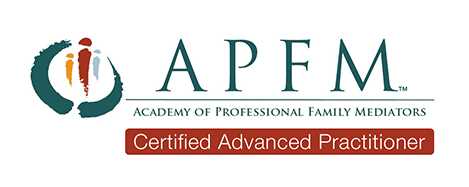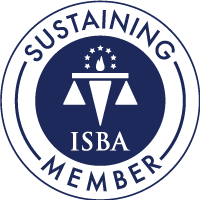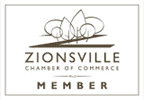Mary consulted 12 doctors, underwent over 40 tests, and spent 2 years trying different diets. She still lost weight and  felt sick. She tried her hardest to regain health, but nothing seemed to work. Mary was ready to give up.
felt sick. She tried her hardest to regain health, but nothing seemed to work. Mary was ready to give up.
Then, a friend gave her a book on intestinal disorders. Mary began to see connections. She gained information to share with her doctor. They created a plan that brought healing.
When couples struggle in marriage, they can begin to feel Mary’s hopelessness. You may be trying your hardest to show your spouse how much you love them. That you are deeply committed. That you want your marriage to thrive.
Yet, you still wound each other. You still fight. You still find yourself feeling isolated and alone.
Couples can begin to feel that nothing will work. That you are ready to give up.
Don’t.
The right resources can get couples on a more effective track.
People are different. We know this.
But, we can forget it in our marriage. We thought we were a perfect match. Then, life hits. Challenges loom. Plain talk brings only misunderstanding. How can our perfect match miss so badly?
We forget. We are different from our spouse.
Couples can find answers to heal their marriage as they understand each other more. Three books detail how people are different. And, how they can blend differences to connect with each other to make a stronger union.
The Way They Learn–by Cynthia Tobias
This easy read details learning styles. How people take information in. How people use information. How both impact the way they relate to others.
As information comes to a person, they tend to be either concrete or abstract. To a concrete person, each word or idea offers one, clear meaning. The world is black or white.
For an abstract person, words and ideas offer layers of meaning. The world has many shades of gray.
Tobias relates a story that makes the distinction easy. A little girl went into a bathroom stall at a restaurant. After a while, her mom entered the bathroom to see if she was ok. The little girl was still in the stall but said she was done. When Mom asked why she wasn’t coming out, the little girl answered, “There’s as sign that says, ‘Do not leave this area without washing your hands.’ I don’t know how to do that.'”
For the concrete little girl, “this area” meant the stall. More abstract people understand that it includes the whole bathroom–sink and all.
In using information, people tend to be sequential–taking each step in order, or random–skipping around as needed.
These factors combine to create 4 basic learning styles–Concrete-Sequential, Concrete-Random, Abstract-Sequential, or Abstract-Random. Tobias details how people within different styles relate to the world and to other people. She also offers charts to help you understand each style’s strengths, weaknesses, and struggles.
As you begin to understand yourself and your spouse, you begin to understand why the clashes come. And, how to blend rather than clash.
You don’t have a bad marriage. You just have a different style. Understanding opens a path to connecting.
Different Children, Different Needs–by Charles Boyd
What Tobias does for thinking styles, Boyd offers for personality. While focused on children, the principles apply equally to adults.
Boyd uses the DISC system to note that people tend to be either fast-paced or slow-paced. And, either task-oriented or people-oriented. Just as with thinking styles–the different combinations create different sets of strengths and weaknesses.
You begin to see how your strengths can minister to your spouse. Equip your family in ways he or she cannot. You also begin to see why God put you with this other person as you discover how his/her strengths cover your own short-comings.
Rather than differences creating separation or misunderstanding, they lead to stronger unions. An appreciation for how each covers the other. A realization that your spouse’s way of behaving can be exactly what you need.
The Five Love Languages–by Gary Chapman
Most people have read this book. If you haven’t, it’s time.
Unless you speak Japanese, you probably don’t know what the symbols mean. Your spouse could write, say, or sing them all day. You still wouldn’t know he or she was saying, “I love you.”
Chapman notes that this happens even when both spouses say, “I love you” in English.
Love comes in five languages:
- words of affirmation
- acts of service
- physical touch
- time
- gifts
Chapman states that , while we all generally like all these, we tend to have one primary love language. If we don’t receive love in this form, it doesn’t matter what else our spouse does. We don’t feel loved.
Husband might be filling the gas tank in the car, getting up early to mow the lawn, staying at work late to make sure the family has everything they need. He is saying, “I love you” with acts of service.
But, if Wife was left waiting at her office for 40 minutes while he got gas, was hoping for a chance to connect on Saturday morning, and had to throw away a specially prepared meal three times last week as he worked late–she might not get the message. She’s looking for his time.
He speaks English. But, she only understands Japanese.
Chapman helps you understand how to say, “I love you” in a language your spouse will hear in his short but powerful book.
When you feel you’ve tried everything, it’s easy to give up. The right resource makes all the difference. As Tobias, Boyd, and Chapman help you understand both yourself and your spouse–you find ways to connect. To blend. To join together in the intimacy you crave.
If you would like more help creating the marriage you desire, The Resolution Center offers Marital Mediation. We help clients define the marriage they want and make the changes needed to get there. For more information call 317-344-9740 or email info@TheResolutionCenterIndy.com. We are ready to serve you.





